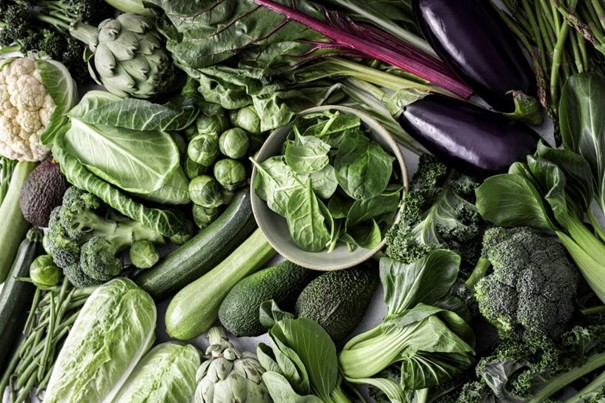The ketogenic or keto diet is a high-fat, low-carb diet that has been used since the 1920s to treat epilepsy, especially in those with drug-resistant epilepsy.
Its main goal is to induce the state of ketosis, in which the body uses ketones produced from dietary and stored fat as its main source of energy instead of glucose from carbohydrates.
Epilepsy is a complex brain condition, and currently the exact mechanisms by which the keto diet works to reduce epileptic seizures are not fully understood. Several formulations are mentioned in the scientific literature to treat intractable epilepsy:
Classic Keto Diet
In the classic ketogenic diet, the amount for each macronutrient is accurately calculated, with a macronutrient ratio of 4:1, or 4 grams of fat to every gram of carbs and protein combined (90% fat, 8% protein and 2% carbs). This diet can be used across all ages and is the most effective therapy for children under the age of two (Kim et al. 2016). It is also the most restrictive and may be less well-tolerated during adolescence and adulthood as compared to other options. Calorie needs are determined by age, activity level and number of meals per day. Protein requirements, however, are established according to body weight (1 gram per kilogram of body weight).
Modified Keto Diet
The modified ketogenic diet is a variant of the classic ketogenic diet used primarily in the treatment of epilepsy, especially among children who have not been successful on traditional anti-epileptic medications.
The modified keto diet is based on the basic principles of the classic one but offers greater flexibility in terms of the ratios of macronutrients (3:1 to 2:1), which makes it more suitable for a variety of dietary needs. Any adjustments will usually depend on each patient’s nutritional needs, age, weight, tolerance, protein requirements and medical condition.
Modified Atkins Diet
First reported in 2003, the modified Atkins diet is less restrictive than the classic keto diet, with an average ratio of 1.5:1 to 1:1, allowing a greater variety of meals with a higher intake of carbs and proteins combined. However, the carb intake is still restricted. It is possible, for example, to begin with 10 grams of carbs a day, increased to 20 grams once ketosis has been reached. So, the modified Atkins diet allows a greater amount of protein and may be easier for some people to follow than the classical version.
Low Glycemic Index (GI) Diet
First described by Pfeiffer and Thiele in 2005, the low GI diet limits the intake of carbs within 40 to 60 grams per day, and only includes those with a GI of 50 or less – ensuring that there is no significant spikes in blood glucose level. It is much more flexible than the ketogenic diet, with fat and protein accounting for around 60% and 30% of total calorie intake respectively. A study of 76 children showed a reduction in seizure frequency of more than 50% in 42 to 66% of children on this diet (Muzykewicz et al. 2009). As it is far less restrictive than the conventional diet, it is a good option for adolescents and adults. In addition, the fact that it is initiated on an outpatient basis makes it a transitional treatment option for children waiting to be admitted on a classic ketogenic diet.
Keto MCT Diet
The Keto MCT diet incorporates a significant portion of MCTs (medium-chain triglycerides) rather than traditional dietary fats, as its main source of fat. MCTs provide more ketones per gram, allowing more proteins and carbs in the diet, thus greater flexibility in food choices. This can be an effective option for picky eaters. In addition, fewer side effects have been reported (kidney stones, stunted growth, etc.) as well as improved lipid profiles (Liu, 2008). However, these effects are limited by the fact that a modified MCT diet was used initially, where only 30% of calories come from MCTs and a further 30% from long-chain triglycerides, and recent randomized controlled trials comparing the MCT diet with the conventional diet have shown no significant difference in terms of tolerance or efficacy. In addition, the amount of MCT oil is increased gradually, which improves tolerance but prolongs the time needed to achieve ketosis and seizure control.
It is essential to note that not all diets are suitable for epilepsy patients and should never be used as a substitute for anti-epileptic medications prescribed by your healthcare professionals. Before starting a new diet, it is important to discuss the matter with an expert in the field, as he or she will be able to help you determine which the appropriate diet for your unique lifestyle. A dietician can assist you in its implementation and day-to-day monitoring.
References:
- Kim, J.A., Yoon, J.R., Lee, E.J. et al. (2016). “Efficacy of the classic ketogenic and the modified Atkins diets in refractory childhood epilepsy.” Epilepsia, 57(1), 51–58. https://doi.org/10.1111/epi.13256.
- Liu, Y.M. (2008). “Medium-chain triglyceride (MCT) ketogenic diet therapy.” Epilepsia, 49(Suppl 8), 33–36. https://doi.org/10.1111/j.1528-1167.2008.01830.x.
- Muzykewicz, D.A., Lyczkowski, D.A., Memon, N. et al. (2009). “Efficacy, safety, and tolerability of the low glycemic index treatment in pediatric epilepsy.” Epilepsia, 50(5), 1118–1126. https://doi.org/10.1111/j.1528-1167.2008.01959.x.




